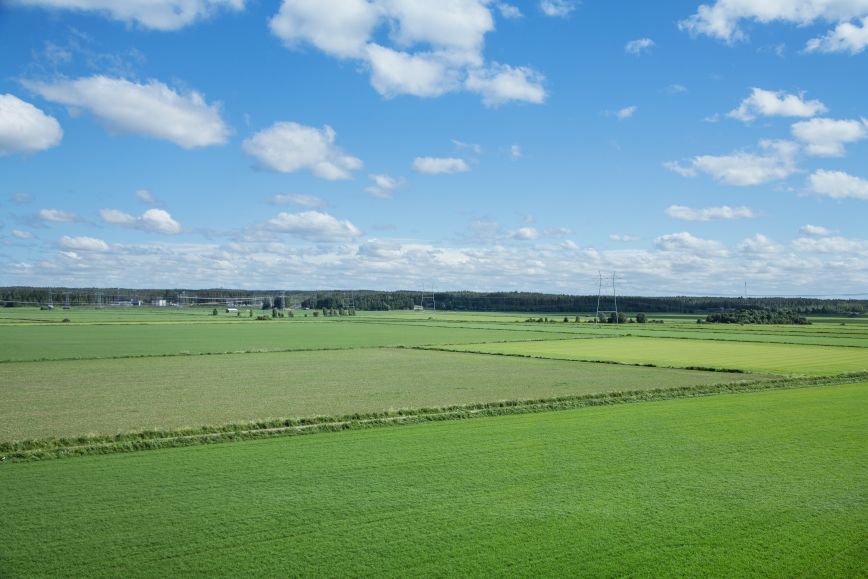Climate and nature action in land consolidation
Land consolidation is a collaborative project to develop Finland’s arable land structure to meet future food production needs. A good land structure promotes the security of supply in the food sector and the profitability of agriculture, improves traffic safety and reduces emissions in the land use sector. The NLS carries out land consolidation annually in an area of roughly 9,000 hectares and has almost 60 projects across Finland.
‘Land consolidation helps reduce the need to clear areas into fields, steer the use of arable land in a more climate-smart direction, and carry out measures to improve the water balance of fields and reduce water pollution. At the same time, it helps protect biodiversity,’ says Timo Potka, Director at the NLS.
In the Peltopankki pilot project launched by the Ministry of Agriculture and Forestry, the aim is to acquire land areas using the funds of the development fund for agriculture (Makera) to advance environmental goals. In practice, the project acquires areas that are suitable for afforestation and not used in farming, fields that are not properly suitable for farming but can be used as wetlands, and sides of streams and main ditches that are suitable for use as floodplains, bird ponds or other sites that protect biodiversity.
‘We’ve carried out practical work for a year now. It’s been really challenging, but we’re making progress. Currently, we’re establishing sites under five land consolidation projects and are looking for new sites. Our focus has been on establishing wetlands that help mitigate climate change in areas with a thick peat layer, but we’ve also worked with water management wetlands, bird ponds and the afforestation of poorly productive peat fields,’ Potka says.
The project’s activities are promoted by a cooperation group, whose members are the NLS, the Centre for Economic Development, Transport and the Environment (ELY) and the Natural Resources Institute Finland (Luke). The goal is to build an effective cooperation model to address climate and water management measures in land consolidation.
Supporting the green transition in the energy economy
Wind power generation is increasing rapidly in Finland, with new wind turbines being erected at a rapid pace. Increasing the amount of wind power is part of the green transition in the energy economy to discontinue the use of fossil fuels.
Wind farms are practically always connected to the main grid through a power line, which spans up to tens of kilometres and travels through the lands of tens or even hundreds of landowners. To build a power line, an agreement with the landowner or an expropriation process is needed. Expropriation carried out by the NLS is often required due to the large number of landowners.
Expropriation starts with a preliminary seizure, as a result of which the project party can start to build a power line without finalising the question of compensation. Preliminary seizures are critical for project schedules, as questions of compensation may take a long time.
‘While preliminary seizures are often initiated a little unexpectedly and urgently, they are important considering project schedules. We seek to carry them out as quickly as possible, while also seeing to landowners’ legal protection,’ says Mauri Asmundela, Director at the NLS.
A record number of projects has started in 2023. Inquiries have also been received regarding solar power and hydrogen pipeline projects. The NLS’s goal is to complete preliminary seizures within the targeted project schedule.
More information
Sustainability Specialist Annukka Kokkonen, 050 467 0911, firstname.lastname@nls.fi
Acts of sustainability: More electronic tools and less unnecessary material
Acts of sustainability: Promoting a diverse and equal working life
Acts of sustainability: Drones and open source to serve society

